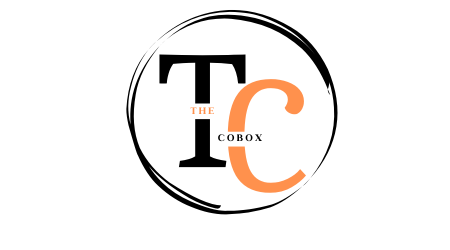Guitar effects have revolutionized the way musicians and producers approach sound design, acting as a vital part of any creative toolkit. For those dabbling in guitar-centric music production, understanding and mastering top-tier plugins like the UAD Lion ’68 Super Lead Amp Plugin and Ruby ’63 Top Boost Amplifier is essential. These UAD guitar plugins, including the Dream ’65 Reverb-Amp plug-in, have been celebrated for their ability to emulate analog gear while providing unmatched digital flexibility. Throughout this article, we’ll explore what makes these plugins unique, compare them head-to-head, and help you determine which is right for your music production needs.
Understanding UAD Lion ’68 Super Lead Amp Plugin
The UAD Lion ’68 Super Lead Amp Plugin dives straight into vintage guitar tones, faithfully emulating Marshall’s iconic Super Lead amps of the late 1960s. For anyone chasing the roaring, rock-ready sounds heard in classic tracks from Led Zeppelin or Hendrix, this plugin delivers an authentic experience.
Key Features
- Authentic Amp Modeling: The UAD Lion is renowned for its faithful recreation of the legendary ’68 Marshall Super Lead tones.
- Dynamic Tonal Range: From clean tones with subtle nuances to distortions that cut through any mix, this plugin delivers a full range of sonic vibes.
- Built-In Cabinet Simulations: Featuring a variety of cabinet IRs (Impulse Responses), it opens up possibilities for tailoring your sound further.
- Effects Integration: Combine with external effects or UAD’s ecosystem for a seamless experience.
Real-World Applications
The UAD Lion plugin truly shines in rock, metal, and blues compositions where bold, saturated tones play a pivotal role. Producers often pair it with delay and reverb effects to simulate large, lush soundscapes typical of live amplified performances.
Comparison with Traditional Amplifiers
Unlike conventional hardware amps that involve setup complexities, the Lion plugin is entirely in-the-box, offering easy adjustments without compromising on tone. Its accurate modeling of analog circuits creates a vintage sound experience while allowing modern DAW flexibility.
Exploring Ruby ’63 Top Boost Amplifier Plugin
On the other hand, the Ruby ’63 Top Boost Amplifier Plugin centers on a British flavor, channeling the unique tone of a Vox AC30 Top Boost amp. Known for its “chimey” high-end and smooth midrange, this plugin suits a completely different sonic palette.
Key Features
- British-Inspired Tonality: Crisp, articulate highs combined with warm mids, perfect for pop, indie, and even country genres.
- Interactive EQ: Customize treble and bass response, mimicking the precise interaction of real tube amplifiers.
- Distinct Speaker Options: A selection of classic Celestion speakers delivers authentic tonal variations.
- Simple User Interface: Its layout is intuitive, making it ideal for both beginners and experienced producers.
User Experience
Ruby’s warm, melodic tones are perfect for rhythm guitar parts and melodic leads. Paired with modulation effects like tremolo or chorus, it emerges as an all-rounder for experimental sound design.
Sound Quality and Character
Unlike the raw power of the UAD Lion, Ruby is characterized by its chiming harmonics and organic sustain. Whether you’re creating jangly pop riffs or airy lead lines, this amp plugin breathes life into your tracks.
Performance Analysis: UAD Lion vs Ruby
When comparing UAD Lion vs. Ruby, differences in tonal flexibility and application become apparent. Let’s break it down further:
Sound Quality
- Lion ’68 Super Lead stands out with its aggressive, rock-forward dynamics, excelling in projects requiring intense overdrive and character.
- Ruby ’63 delivers cleaner, smoother sounds, with shimmering highs and pronounced mids ideal for more delicate arrangements.
Application Across Styles
- Lion suits heavy genres such as rock and blues, fitting scenarios where distortion rules.
- Ruby thrives in indie, pop, and even jazz settings, emphasizing articulate low-gain tones.
Compatibility
Both plugins are compatible with various guitars, from single-coil Stratocasters to humbucker-equipped Les Pauls. Their ability to adapt to different pickups makes them useful additions for all recording setups.
Impact on Production
Widely used in both studio recordings and live setups, these plugins sit right at home in modern DAWs. With no need for Universal Audio DSP hardware, they’re also highly accessible.
Pricing and Value Proposition
Investing in plugins is often a balancing act between quality and cost. Here’s how the UAD Lion and Ruby stack up:
- UAD Lion ’68 Super Lead is priced competitively, offering excellent value for rock and blues enthusiasts who demand authenticity.
- Ruby ’63 Top Boost Amplifier comes at a similar price, catering specifically to those chasing clean British tones.
- Both plugins are part of UAD’s native series, meaning you won’t require additional DSP hardware.
For budget-conscious producers, occasional sales or bundles from Universal Audio may reduce costs significantly.
User Feedback and Ratings
What are musicians and producers saying about these plugins? Here’s an overview of user sentiment:
- UAD Lion is widely praised for its faithfulness to vintage Marshall amps and dynamic tonal capabilities, though some note a steep learning curve for beginners.
- Ruby ’63 draws accolades for its simplicity and warm tone, but advanced users may find its sound palette slightly limited.
Both plugins hold impressive user ratings, hovering between 4.7/5 and 4.9/5 on popular forums and marketplaces like Gearspace and Plugin Boutique.
Making the Best Choice: Which is Right for You?
Choosing between UAD Lion vs Ruby comes down to your personal musical style and needs:
- Opt for Lion if you’re seeking high-gain British rock tones inspired by classic ’60s pioneers.
- Choose Ruby if shimmering cleans, intricate chords, and melodic leads form the backbone of your sound.
Additionally, combining both plugins is a viable option for creative producers looking to cover the widest sonic range possible.
Why Mastering Guitar Effects Matters
Mastering plugins like the UAD Lion and Ruby is more than just a technical exercise—it’s about storytelling through sound. Each strum, riff, or chord you create becomes richer when paired with tools designed to emulate world-class hardware.
YOU MAY ALSO LIKE
Pro y Contras Del Radio Schematic CS227: Is It Worth Your Investment?
FAQs
1. Do UAD guitar plugins require extra hardware?
No, the Lion, Ruby, and Dream ’65 plug-ins are native and do not require UA DSP hardware to function.
2. Can these plugins be integrated with pedals?
Yes, both Lion and Ruby support integration with virtual effect pedals, allowing for even more tonal flexibility.
3. Are there any free trials available for these plugins?
Universal Audio often offers free trials for new users. Be sure to check their website for the latest promotions.
4. Which plugin suits metal music better?
The UAD Lion ’68 Super Lead is better suited to metal due to its aggressive distortion and powerful tonal range.
5. Can these plugins replace physical amps in a live setting?
Yes, many musicians use these plugins in live setups through amp modelers or DI boxes.
Final Thoughts on Mastering the UAD Lion and Ruby
Understanding and mastering guitar effects through plugins like the UAD Lion and Ruby enhances the musician-producer relationship with sound. By aligning your needs with the distinct flavor of each plugin, you not only improve production efficiency but also unlock creativity at new levels. Whether you’re chasing vintage Marshall grit or pure Vox-inspired harmonics, UAD plugins have you covered.











